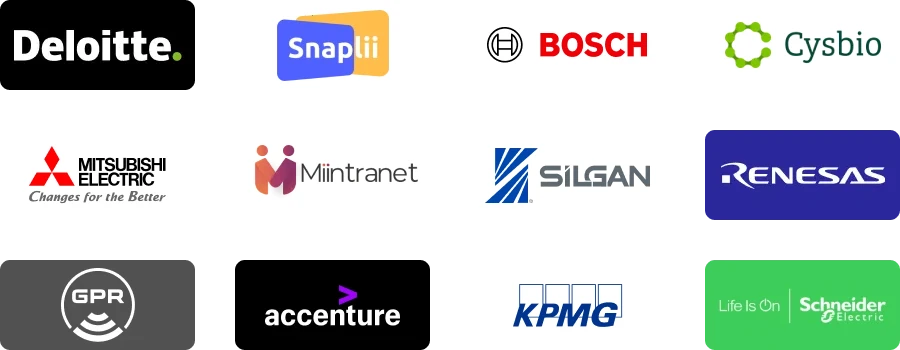| REPORT ATTRIBUTE |
DETAILS |
| Historical Period |
2019-2022 |
| Base Year |
2023 |
| Forecast Period |
2024-2032 |
| Potato Protein Market Size 2024 |
USD 495 million |
| Potato Protein Market, CAGR |
7% |
| Potato Protein Market Size 2032 |
USD 850.5021 million |
Market Overview:
The Global Potato Protein Market is projected to grow from USD 495 million in 2024 to an estimated USD 850.5021 million by 2032, with a compound annual growth rate (CAGR) of 7% from 2024 to 2032.The demand for potato protein is primarily fueled by the growing consumer focus on health, sustainability, and dietary preferences. Potato protein is rich in essential amino acids, making it an attractive choice for health-conscious consumers and those following plant-based diets. It is also naturally allergen-free, offering an alternative to common protein sources like soy, gluten, and dairy, which makes it suitable for individuals with specific dietary restrictions. In addition, the increasing trend toward vegan and vegetarian diets has contributed to the demand for potato protein as manufacturers seek versatile ingredients to enhance the protein content of their products. The animal feed industry has also recognized the benefits of potato protein, as it provides a high-quality source of protein for livestock, promoting growth and overall health. Moreover, the production of potato protein is considered more environmentally friendly than traditional animal-based protein sources, aligning with consumers’ and industries’ growing focus on sustainability.
Europe currently dominates the global potato protein market, accounting for a significant share due to the region’s strong presence of potato farming and well-developed food processing industry. Key countries like Germany, France, and the Netherlands are major contributors, driven by high demand for plant-based and allergen-free protein ingredients. North America follows closely, with increasing consumer awareness of plant-based diets and growing applications of potato protein in food, beverages, and animal feed. The Asia-Pacific region is expected to witness the fastest growth, fueled by rising disposable incomes, expanding food processing sectors, and increased demand for protein-rich ingredients in countries like China, India, and Japan. Latin America and the Middle East & Africa regions show steady growth, supported by the growing animal feed sector and increased adoption of sustainable ingredients. As consumer preferences continue to evolve, the demand for potato protein is expected to expand across both established and emerging markets.
Access crucial information at unmatched prices!
Request your sample report today & start making informed decisions powered by Credence Research Inc.!
Download Sample
Market Drivers:
Rising Demand for Plant-Based Proteins:
One of the primary drivers of the global potato protein market is the growing consumer preference for plant-based proteins. As more individuals adopt vegan and vegetarian lifestyles or simply reduce animal product consumption, the demand for plant-based protein sources has surged. For example, a survey conducted by BENEO found that one in four consumers globally identifies as flexitarians, indicating a significant shift towards reducing meat consumption. Potato protein, being naturally plant-based, offers an ideal alternative to traditional animal proteins like whey or casein. Additionally, the global movement toward healthier and sustainable dietary options has led many consumers to explore plant-based foods that are rich in essential nutrients. Potato protein, with its complete amino acid profile and easy digestibility, aligns well with these preferences, appealing to a diverse range of health-conscious consumers seeking non-animal protein sources.
Allergen-Free and Functional Properties:
The allergen-free nature of potato protein makes it an increasingly popular choice among consumers with specific dietary restrictions. Unlike soy, dairy, and gluten-based proteins, which are common allergens, potato protein is free from these allergens, making it suitable for individuals with soy, dairy, or gluten sensitivities. For instance, according to Avebe, their Solanic® potato proteins are marketed as having low allergenicity while providing excellent emulsifying, foaming, and gelling properties. This advantage has led food manufacturers to incorporate potato protein into various products, including baked goods, snacks, and meat alternatives, where its functional properties enhance texture, binding, and water retention. Furthermore, potato protein’s versatility in food formulation allows for improved mouthfeel and stability in a wide range of applications, making it an attractive ingredient for manufacturers focused on meeting consumer demand for allergen-free and functional protein sources.
Increasing Applications in Animal Feed:
The animal feed industry represents another major driver for the global potato protein market. Potato protein is valued for its high-quality amino acid profile, which is essential for the growth and overall health of livestock, poultry, and aquaculture species. Its nutritional value has made it an effective supplement in animal feed formulations, promoting healthier and more sustainable livestock production. As livestock farmers and aquaculture producers increasingly seek sustainable, nutrient-dense ingredients, potato protein has gained traction as an environmentally-friendly alternative to traditional protein sources like fishmeal and soybean meal. Furthermore, the use of potato protein in animal feed supports the broader trend toward more sustainable agricultural practices, as it reduces reliance on animal-based protein sources, lowers feed costs, and promotes improved feed efficiency in animals.
Sustainability and Eco-Friendly Production:
Sustainability concerns play a significant role in the rising demand for potato protein. Potato protein production has a lower environmental impact compared to traditional animal protein production, as it requires less water, land, and energy. This aspect has made potato protein an attractive choice for consumers and manufacturers alike who prioritize sustainable and eco-friendly ingredients. Additionally, potato protein is often a by-product of potato starch processing, allowing manufacturers to minimize waste by repurposing it into a valuable protein source. This efficient use of resources aligns with the broader movement toward circular economy principles and responsible resource management. As the focus on sustainability intensifies across industries, the market for potato protein is expected to expand, as it appeals to environmentally-conscious consumers and businesses looking to minimize their ecological footprint.
Market Trends:
Expansion of Functional Food and Beverage Applications:
A significant trend in the global potato protein market is its expanding use in functional food and beverage applications. As consumers seek foods with added health benefits, manufacturers are increasingly incorporating potato protein into products like protein bars, beverages, and plant-based dairy alternatives. Potato protein’s favorable amino acid profile and digestibility make it an excellent choice for boosting the nutritional content of these products. For instance, Ingredion, a leading global ingredients provider, has launched a new line of potato protein-based ingredients for use in functional foods and beverages. Additionally, its functional properties—such as excellent binding, emulsifying, and water-retention capabilities—allow it to enhance texture and stability. This trend aligns with consumer demand for convenient, nutrient-rich food and beverage options, as the popularity of functional foods continues to rise across various demographics, including athletes, fitness enthusiasts, and individuals with active lifestyles.
Rising Popularity in Meat and Dairy Alternatives:
The global shift toward plant-based diets has fueled the development of meat and dairy alternatives, where potato protein is increasingly being utilized as a key ingredient. Potato protein’s texture-enhancing properties make it particularly suitable for plant-based meat products, helping to replicate the mouthfeel of conventional meat. It also functions well in dairy-free products, such as yogurts, cheeses, and milk alternatives, where it contributes to a creamy texture and enhanced protein content. As consumers seek plant-based options that mimic the taste and experience of animal products, manufacturers are leveraging potato protein’s functionality to improve product appeal and meet demand. The trend towards plant-based meat and dairy alternatives is expected to drive further growth in the potato protein market, as companies continue to innovate and expand their offerings in these categories.
Increased Demand from Sports and Fitness Nutrition:
Potato protein is gaining popularity within the sports and fitness nutrition sector, where there is a growing preference for plant-based protein sources. Athletes and fitness enthusiasts are turning to plant-based proteins due to their digestibility, amino acid profile, and sustainability benefits. Potato protein has emerged as a viable alternative to traditional proteins like whey, as it provides essential amino acids necessary for muscle recovery and growth. Moreover, its hypoallergenic properties make it suitable for individuals with dairy or soy allergies, broadening its appeal within the fitness community. As the trend towards plant-based nutrition in sports grows, potato protein is expected to capture a greater share of the sports nutrition market, as brands develop plant-based protein powders, shakes, and supplements to cater to this audience.
Focus on Sustainable and Clean Label Ingredients:
The global potato protein market is also experiencing a trend towards sustainable and clean-label ingredients, driven by consumer demand for transparency and environmental responsibility. Potato protein is often derived from by-products of potato starch production, making it a more sustainable choice compared to traditional animal-based proteins. Additionally, consumers are increasingly drawn to clean-label products, which feature minimally processed, recognizable ingredients free from artificial additives. Potato protein fits this trend, as it is naturally free from allergens, gluten, and GMOs, making it an attractive ingredient for brands focused on providing clean-label and eco-friendly products. For instance, Ingredion, a food ingredient company, has dedicated significant resources, totaling $20 million, to research and development efforts focused on creating a new line of potato protein ingredients that are considered environmentally sustainable. By implementing these initiatives, the company claims to have achieved a 10% reduction in its overall carbon footprint. As the demand for sustainable and transparent food production grows, potato protein’s clean-label appeal will likely support its broader adoption across the food and beverage industry.
Market Restraints and Challenges:
High Production Costs and Limited Scalability:
One of the primary challenges in the global potato protein market is the high cost of production, which affects the price competitiveness of potato protein compared to other plant-based proteins, such as soy and pea. Extracting protein from potatoes is a complex process that requires advanced technology and significant energy inputs, resulting in higher production costs. Additionally, potato protein production is often limited by the availability of raw materials and infrastructure needed to scale up processing facilities. This limited scalability can constrain the supply of potato protein, particularly as demand continues to grow. High production costs and limited scalability make it challenging for manufacturers to compete on price and reach a broader consumer base, particularly in cost-sensitive markets.
Taste and Functional Limitations:
While potato protein has several functional benefits, it also faces challenges related to taste and application limitations. Potato protein has a distinct taste that may not always blend well with certain food and beverage formulations, especially in products where a neutral flavor profile is preferred. This can limit its usage in various applications, as manufacturers seek protein sources that do not impact the overall taste of their products. Furthermore, while potato protein has strong binding and water-retention properties, it may not perform as effectively as other plant-based proteins in specific applications, such as those requiring foaming or gelling properties. Overcoming these functional limitations is essential for manufacturers seeking to expand the use of potato protein across diverse product categories.
Regulatory and Supply Chain Challenges:
The global potato protein market also faces regulatory and supply chain challenges. Regulations surrounding plant-based protein products vary widely across regions, with some countries imposing strict guidelines on food safety, labeling, and ingredient sourcing. Complying with these regulations can add complexity and costs to production, especially for companies looking to expand internationally. Additionally, the potato protein supply chain is vulnerable to disruptions caused by factors like crop yield variability and climate change, which can impact the availability and quality of raw potatoes. As demand for potato protein grows, ensuring a consistent and reliable supply of high-quality raw materials will be crucial for manufacturers. Addressing these regulatory and supply chain challenges will require ongoing investments in sustainable sourcing practices and robust quality control measures to ensure market stability and growth.
Market Segmentation Analysis:
By Type, the market includes isolate, concentrate, and other forms of potato protein. Isolate potato protein holds a significant share due to its high protein content and purity, making it ideal for applications requiring enhanced nutritional value. Concentrates, which contain a lower protein content but retain more of the original potato components, are widely used in applications where cost-effectiveness and functional properties are prioritized. Other forms of potato protein are utilized for specific applications, often where unique functional characteristics are required.
By Application, the potato protein market serves two primary segments: the food and beverage industry and animal feed. Within the food and beverage sector, potato protein is used across a range of applications, including meat analogues, dairy-free products, confectionery, bakery, processed foods, and functional foods. In meat analogues and dairy-free products, potato protein serves as a valuable alternative to animal proteins, contributing to texture and protein content. Its inclusion in processed and functional foods enhances the nutritional profile, aligning with consumer demand for plant-based and allergen-free options. The animal feed segment also utilizes potato protein for its high-quality amino acid content, supporting growth and health in livestock and aquaculture.
Segmentation:
By Type
- Isolate
- Concentrate
- Others
By Application
- Food & Beverage Industry
- Meat Analogue
- Dairy – free
- Confectionary
- Bakery
- Processed foods
- Functional foods
- Others
- Feed
By Region
- North America
- Europe
- Germany
- France
- UK
- Italy
- Spain
- Rest of Europe
- Asia Pacific
- China
- Japan
- India
- South Korea
- South-east Asia
- Rest of Asia Pacific
- Latin America
- Brazil
- Argentina
- Rest of Latin America
- Middle East & Africa
- GCC Countries
- South Africa
Regional Analysis:
Europe
Europe holds the largest share of the global potato protein market, accounting for approximately 40% of the total market. This dominance is driven by the region’s well-established potato farming industry and advanced food processing infrastructure. Key countries such as Germany, France, and the Netherlands are leading contributors, with a strong focus on plant-based ingredients and sustainable food production practices. In Europe, there is high demand for allergen-free protein sources, particularly in the food and beverage sector, where potato protein is widely used in meat analogues, dairy-free products, and functional foods. Additionally, European consumers are increasingly health-conscious and environmentally aware, which has accelerated the adoption of plant-based proteins. With supportive government policies encouraging sustainable agriculture, the European market for potato protein is anticipated to grow steadily.
North America
North America accounts for around 30% of the global potato protein market share, driven by the United States and Canada. The region’s growth is largely fueled by rising consumer demand for plant-based proteins, spurred by health consciousness, sustainability concerns, and dietary shifts toward vegetarian and vegan lifestyles. In North America, potato protein is popular in the functional foods and dietary supplements sectors, as well as in the processed food industry. The foodservice industry’s interest in plant-based protein options also supports market growth, as restaurants and fast-food chains increasingly incorporate plant-based items into their menus. Additionally, the region’s animal feed sector has shown a growing interest in potato protein due to its high-quality amino acid profile, supporting livestock and aquaculture industries. As consumer interest in plant-based protein sources continues to expand, North America is expected to maintain its strong position in the global market.
Asia-Pacific
The Asia-Pacific region represents approximately 20% of the global potato protein market and is the fastest-growing region. Countries like China, India, and Japan are driving growth, with rising disposable incomes and increasing awareness of plant-based diets. The food and beverage industry in Asia-Pacific is experiencing rapid development, fueled by the growing popularity of vegan and vegetarian options. In this region, potato protein is utilized in processed foods and bakery products, aligning with consumer demand for nutritious, plant-based ingredients. Additionally, the region’s animal feed industry is adopting potato protein as an alternative to traditional protein sources, such as soy and fishmeal, to meet the growing demand for high-quality livestock feed. As awareness of sustainable food production practices grows, the Asia-Pacific market for potato protein is expected to expand significantly.
Latin America and Middle East & Africa
Latin America and the Middle East & Africa collectively account for around 10% of the global potato protein market. In Latin America, Brazil and Argentina are key markets, driven by an expanding food processing sector and a growing focus on sustainable agriculture. The Middle East & Africa region, particularly in countries like South Africa and the UAE, is witnessing steady growth as consumer awareness of plant-based diets and sustainable ingredients rises. Although these regions currently hold a smaller share of the market, the adoption of potato protein in food and feed applications is gaining traction, supported by rising disposable incomes and increasing demand for plant-based protein alternatives. As awareness continues to grow, these regions are expected to experience gradual market expansion.
Shape Your Report to Specific Countries or Regions & Enjoy 30% Off!
Key Player Analysis:
- Agrana Beteiligungs-AG
- AKV Langholt AmbA
- Avebe
- Kemin Industries, Inc.
- Meelunie B.V.
- Omega Protein Corporation
- Pepees S.A.
- Roquette Freres
- Sudstarke GmbH
- Tereos Group
Competitive Analysis:
The global potato protein market is moderately concentrated, with several key players, including Avebe, Tereos Group, and Roquette Frères, leading the market through strong production capacities and advanced processing technologies. These companies benefit from established supply chains and strategic partnerships, enabling them to maintain a steady supply of high-quality potato protein for diverse applications. Their focus on research and development helps drive product innovation, allowing them to produce specialized protein isolates and concentrates that cater to the evolving needs of the food, beverage, and animal feed industries. Smaller regional players also contribute to market diversity by offering cost-effective and niche products tailored to local demands. As demand for plant-based proteins rises globally, the competitive landscape is shaped by investments in sustainable practices, expansion into emerging markets, and efforts to improve product quality and functionality. This competition drives ongoing innovation in the market, fostering growth and enhancing the appeal of potato protein across multiple sectors.
Recent Developments:
- In December 2023, Netherlands-based supplier Avebe introduced PerfectaSOL, a new generation of potato-based products designed for alternative dairy, confectionery, and other food applications. This innovative product features a neutral white color, smoothness, and strong emulsification properties.
- In November 2023, Royal Avebe expanded its product line with PerfectaSOL, a next-generation potato protein range aimed at enhancing its plant-based consumer product portfolio.
- In July 2023, Brenntag entered a distribution agreement with Avebe, enabling Brenntag to distribute Avebe’s potato starch and protein ingredients across Turkey.
- In 2022, Branston, a leading potato supplier in the UK, announced plans to establish a £6 million potato protein extraction facility, exclusively utilizing UK-grown potatoes and slated for completion by 2024.
- In 2022, Maastricht University researchers conducted a study showing that consuming 30 grams of potato protein concentrate promotes muscle protein synthesis at rest and post-exercise in healthy young males.
- In February 2022, KMC Ingredients developed a texturized potato protein specifically for use in meat alternative products.
Market Concentration & Characteristics:
The global potato protein market is moderately concentrated, with key players like Avebe, Tereos Group, and Roquette Frères dominating due to their advanced processing technologies, strong supply chains, and extensive distribution networks. These companies leverage their expertise in potato-based ingredients to develop high-quality protein isolates and concentrates, which cater to diverse applications in the food, beverage, and animal feed sectors. The market is characterized by a growing emphasis on sustainability and plant-based nutrition, as potato protein is perceived as an eco-friendly, allergen-free alternative to traditional protein sources. Additionally, its functional properties, such as emulsification, water retention, and texture enhancement, make it versatile for use in a wide range of products, from meat analogues and dairy-free foods to functional foods and animal feed. The competitive landscape is marked by ongoing innovation, as companies invest in research and development to meet rising demand for sustainable, clean-label protein options.
Report Coverage:
The research report offers an in-depth analysis based on By Type and By Application. It details leading market players, providing an overview of their business, product offerings, investments, revenue streams, and key applications. Additionally, the report includes insights into the competitive environment, SWOT analysis, current market trends, as well as the primary drivers and constraints. Furthermore, it discusses various factors that have driven market expansion in recent years. The report also explores market dynamics, regulatory scenarios, and technological advancements that are shaping the industry. It assesses the impact of external factors and global economic changes on market growth. Lastly, it provides strategic recommendations for new entrants and established companies to navigate the complexities of the market.
Future Outlook:
- The global potato protein market is projected to grow as demand for plant-based and allergen-free protein sources rises.
- Increasing adoption of vegan and vegetarian diets will drive demand for potato protein in meat and dairy alternatives.
- Technological advancements will enhance potato protein extraction, improving quality and reducing production costs.
- Expanding use of potato protein in functional foods will cater to consumers seeking health-boosting ingredients.
- The animal feed industry will increasingly use potato protein as a sustainable, high-quality protein source for livestock.
- Consumer preference for clean-label and eco-friendly products will support market growth in both developed and emerging regions.
- Asia-Pacific is expected to experience rapid growth due to rising disposable incomes and awareness of plant-based nutrition.
- Partnerships between manufacturers and food service providers will expand potato protein’s presence in restaurant and foodservice channels.
- Innovations in flavor and texture will improve potato protein’s appeal across a broader range of food applications.
- Strategic investments in sustainable and regional sourcing will strengthen market stability and resilience to supply chain disruptions.







